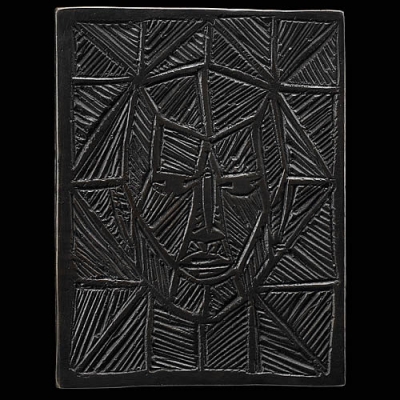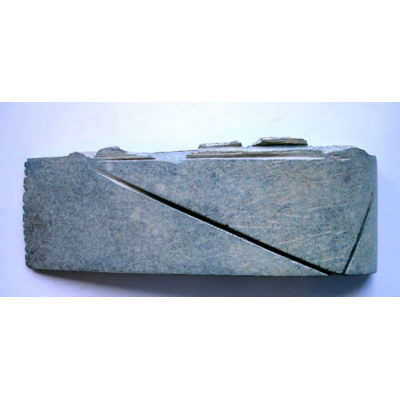Benedict Carpenter (b. 1975) studied at the Royal College of Art in London and was awarded the Jerwood Sculpture Prize in 2001. Since then he has developed a practice that encompasses many materials and processes but which normally concentrates on permanently sited public sculpture. He has recently completed projects for the Arts Council and the Jerwood Foundation, as well as working with many smaller commissioning bodies to create projects for locations in Rutland, Shropshire, Middlesbrough and Asturias in Spain. Among other themes, his large scale work explores the object in relation to the movement of the spectator, looking at how different lines of sight create changing sculptural and spatial effects. In his small scale work this is translated into an interest in how an object’s appearance will alter as it is handled, and this concern is reflected in his treatment of Genealogical Object, which was included in the FIDEM exhibition held in Tampere, Finland, in 2010 and is now issued by BAMS. About this medal, the artist writes: ‘The object grew out of a drawing project in which I responded to various artefacts that had been collected by my family as a result of an association with Africa. Of particular importance were two Yoruba carvings of my great grandparents who were Methodist missionaries in the Niger Delta. When I was growing up these carvings were displayed on top of the television, and as I regularly spent time pointing in that direction, their somewhat hieratic physiognomies, translated as they were into a totally foreign idiom, imprinted themselves strongly on my consciousness. The project was also a response to other carvings that had been collected by my grandmother when she worked in the 1950s and ’60s as a doctor in Nigeria. Together, these carvings, variously associated with a family member or actually depicting them, served as a family album. My forebears were familiar by definition, but through the “otherness” of their depiction they came to seem significantly foreign. The project was an attempt to reconcile this contradiction by drawing myself in a manner derived from these carvings. The project could be described as a kind of a sculptural Lamarckism involving my inheritance of my relatives’ acquired sculptural style. ‘The medal extends this project by including a representation of me on one side and my wife on the other. Her background is significantly different from mine. She was born in Eritrea, formerly part of Abyssinia, and left the country when she was fourteen years old. For this object, I have synthesised influences drawn from the West African artefacts mentioned above with an Abyssinian Orthodox Christian style reflecting my wife’s East African heritage. It seems to me that the medal, as a highly portable and frequently exchanged form, is a suitable vehicle for expressing inter-cultural fusion of this nature. I hope that other people can draw personal significance from this aspect of the work. ‘The device of the angled V section grooves derives from an Igbo door on display in the British Museum. Because of the way the object is lit and the angling of the door’s grooves, as the spectator moves around the form different areas seem to blink, briefly reflecting light in the spectator’s direction before turning dark again. In my small medal, I am interested in how this effect can be replicated as the object is handled by the spectator.’

Genealogical Object
Genealogical Object
By: Benedict Carpenter, 2009
Medium: cast bronze
Size: 103 x 80mm
Cast by: Royal College of Art foundry
Issue: The Medal, no 58 (Spring 2011)
Edition: 16




